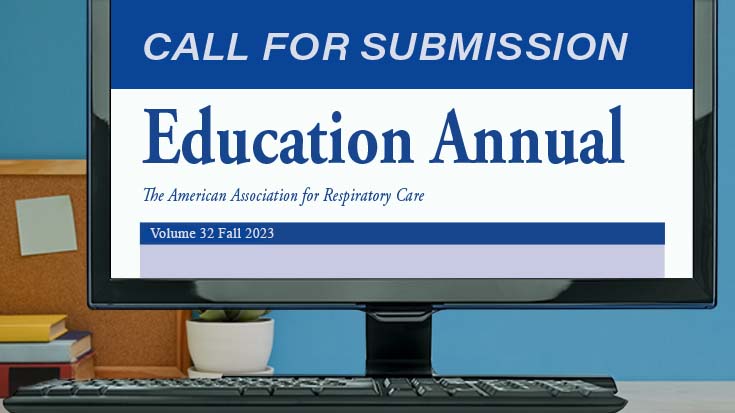
With permission from the ECRI the AARC has re-published the below recommendations from the ECRI.
Safe Cleaning and Disinfection of Ventilators: ECRI’s Recommendations
The cleaning and disinfection recommendations provided for different ventilators, including which components need cleaning/disinfection, how to clean/disinfect them, and how frequently, are inconsistent from one vendor to the next. What’s more, the U.S. Centers for Disease Control and Prevention (CDC) recommendations are not completely clear about which ventilator components, if any, are covered. This can cause confusion about what measures are necessary to keep patients safe.
ECRI’s recommendations include:
- Use single-use items whenever possible.
- Use at least one filter in the breathing circuit between the patient and the exhalation valve, making sure it is
appropriate for the known or suspected pathogen. - Even if one or more filters are used, perform high-level disinfection on any reusable ventilator components,
including exhalation valves, that may come into contact with exhaled patient gas. - Perform low-level disinfection of external ventilator surfaces between patients.
- Perform high-level disinfection on any reusable breathing circuits between patients.
Overview
Ventilator vendors are inconsistent in their recommendations for preventing cross-contamination between patients.
For example:
- Some vendors—but not all—explicitly recommend that, after every patient, facilities perform high-level disinfection on the exhalation valve and any other components that are in the path of exhaled gases.
- Some vendors provide detailed cleaning and disinfecting information but make no specific recommendations on how often these tasks should be performed.
- Some vendors informally instruct clients that a filter in the breathing circuit, either at the patient wye or between the circuit and the exhalation valve, will be sufficient to prevent pathogens from finding their way onto reusable components and thereby becoming a potential source of cross-contamination. (But to our knowledge, no vendor has included such a recommendation in their user manuals.)
This can cause confusion about what measures are necessary to keep patients safe, especially in facilities that
have a mixed fleet of ventilators.
The U.S. Centers for Disease Control and Prevention (CDC) Guideline for Disinfection and Sterilization in Healthcare Facilities (2008) states, in recommendation 3.b., “Provide, at a minimum, high-level disinfection for semicritical patient-care equipment (e.g.,gastrointestinal endoscopes, endotracheal tubes, anesthesia breathing circuits, and respiratory therapy equipment) that touches either mucous membranes or nonintact skin.” However, it is not completely clear which ventilator components, if any, are covered by this recommendation. While the endotracheal tube clearly touches mucous membranes, the ventilator components do not touch them directly. On the other hand, airway secretions (and ventilator condensate, which contains secretions) are a possible vector by which the patient’s
mucous membranes could contaminate ventilator components.
ECRI Recommendations
- Whenever possible, use single-use items to reduce the risk of cross-contamination.
- When ventilating a patient with a known or suspected airborne pathogen, use at least one appropriate filter in the breathing circuit between the patient and the exhalation valve of the ventilator—either at the patient wye or between the circuit and the exhalation valve.
- The primary purpose of this filter is to limit the spread of the disease through the atmosphere. Placing the filter upstream of the exhalation valve can also limit contamination of the valve and other reusable ventilator components; however, use of a filter is not sufficient to prevent cross-contamination (see recommendation 4).
- The exact type of filter needed for a given patient depends on the known or suspected pathogen, as well as other factors.
- Generally, if a heated humidifier is in use, the filter should be located between the breathing circuit and exhalation valve.
- If a heat/moisture exchanger (HME) is being used for humidification, using one with a filter (i.e., a heat/moisture-exchanging filter [HMEF]) precludes the need for an additional filter.
- All filters should be checked before use. In addition, filters should be replaced per filter manufacturer recommendations or if they become saturated with condensate.
- ECRI believes that airway secretions, and ventilator condensate that contains secretions, should be
considered to be just as potentially infectious as mucous membranes. Therefore, we recommend that facilities generally treat any reusable ventilator components that may come into contact with exhaled patient gas as semicritical equipment and perform high level disinfection or greater on those components between patients. This applies whether or not one or more filters are used. Components to disinfect include internal exhalation valves on most intensive care ventilators, many subacute ventilators, and some transport ventilators. External exhalation valves, which are present on the majority of transport ventilators, should also be given this level of reprocessing, if they are reusable (most aren’t).
5. For most intensive care ventilators, this means the exhalation valve or cartridge should be removed between patients and sent for processing as described in the user manual. For convenience, consider keeping two exhalation valves or cartridges for each device to minimize turnover time between patients.
6. The external surface of the ventilator should receive at least low-level disinfection between patients.
7. If used, reusable breathing circuits should receive at least high-level disinfection between patients.
Related Resources
Ventilators: The Essentials
Evaluation Background: Intensive Care Ventilators
Evaluation Background: Transport Ventilators for Intrahospital Use
Mechanical Ventilation of SARS Patients: Lessons from the 2003 SARS Outbreak
Citation
ECRI. Safe cleaning and disinfection of ventilators: ECRI’s recommendations. Device Evaluation 2021 Oct 6.
Copyright © 2021 ECRI
Email newsroom@aarc.org with questions or comments, we’d love to hear from you.















